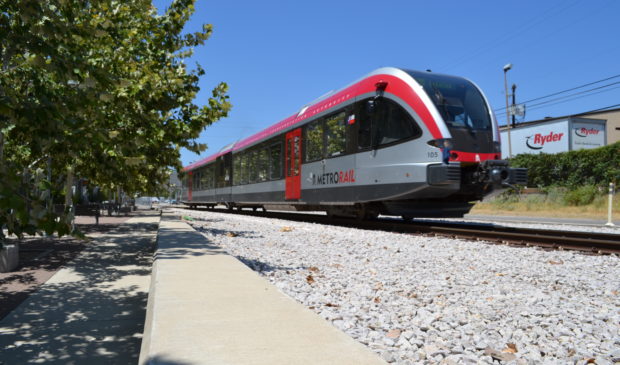ASMP is here to guide the multimodal path to 2039
Monday, February 25, 2019 by
Ryan Thornton The city of Austin is inviting public comment as the final draft of the Austin Strategic Mobility Plan makes its way to various city boards and commissions beginning this week and continuing through March. The full document was made available on the city’s website on Friday, Feb. 22.
ASMP is the city’s transportation appendix to the 2012 Imagine Austin Comprehensive Plan, which outlines a vision of sustainable growth through 2039 (Austin’s 200th anniversary). It is a compilation of policies and actions to reach the city’s transportation targets with accompanying transportation network maps and tables. If adopted, ASMP will take the place of the outdated 2025 Austin Metropolitan Area Transportation Plan.
It took the city roughly two years to write the plan with the help of the Multimodal Community Advisory Committee and an extensive public engagement process. Thanks in part to the advisory committee’s dual mission of guiding both ASMP and Project Connect, the plan is Austin’s first comprehensive transportation vision to complement Capital Metropolitan Transportation Authority’s long-term transit vision. It also incorporates elements from dozens of other visions, from the Bicycle Master Plan to the CAMPO 2040 Plan.
Austin Transportation launched its public engagement process in December 2016 to gauge the community’s interest in various transportation visions. Over that time, ATD verified that the majority of Austin residents are most concerned with affordability and traffic and least interested in economic prosperity and innovation with regard to transportation goals.
In a survey involving 5,777 participants, the city also found that 48 percent of all Austin residents prefer a transportation vision emphasizing transit and multimodal infrastructure over roadway projects meant to move more cars. Of three scenarios presented to the community, the least popular was the vision prioritizing roadways over bicycle and public transit projects. While that scenario was preferred in Districts 6 and 8 in Northwest and Southwest Austin, the city’s core neighborhoods came out in strong favor of transit and multimodal infrastructure.
Nonetheless, ASMP doesn’t explicitly prioritize any particular mode. The plan states a general goal of moving toward a 50/50 mode share with 50 percent of workers commuting by single-occupancy vehicles and the other half using transit, carpooling, biking, walking or teleworking by 2039. According to the city’s population growth projections, the 50/50 mode share would allow for 20 years of growth while maintaining traffic at its current levels.
Today, 74 percent of workers commute alone by car and 18 percent walk or use rideshares, carpools, transit or bikes. Another 8 percent work from home. While a 50/50 mode share might sound like a monumental leap for only 20 years, a large chunk of that figure is accounted for by one potential goal to nearly double the percentage of professionals working from home. With Project Connect on the horizon, ASMP’s hypothetical scenario also includes quadrupling the percentage of transit commutes from 4 to 16 percent. Bicycling and walking, on the other hand, each make up only 4 percent of commutes in a 50/50 scenario presented in the plan (for Central Austin residents, the target for bike commutes is 15 percent by 2025).
The plan’s seven chapters examine transportation issues from specific angles and provide policy goals to help the city transition into a safe and efficient multimodal future. The policies involve cultural and behavioral changes as well as infrastructural and political efforts. Each of these guidelines are meant to inform decisions as the city moves ahead with Project Connect, an updated land development code, expanded transportation demand management programming and other major projects.
Though this is a final draft, community members are invited to comment on ASMP as it is presented and discussed over the coming month. It will first go to the Mobility Committee on Thursday, Feb. 28, and should finally go to City Council in late March. All upcoming ASMP discussions are open to the public.
Photo by Steven Polunsky made available through a Creative Commons license.
The Austin Monitor’s work is made possible by donations from the community. Though our reporting covers donors from time to time, we are careful to keep business and editorial efforts separate while maintaining transparency. A complete list of donors is available here, and our code of ethics is explained here.
You're a community leader
And we’re honored you look to us for serious, in-depth news. You know a strong community needs local and dedicated watchdog reporting. We’re here for you and that won’t change. Now will you take the powerful next step and support our nonprofit news organization?











